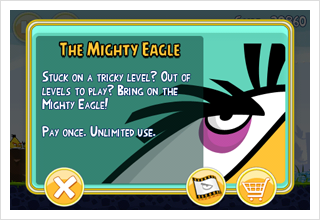Here’s what caught my attention in the payment space this week.
Flurry: Gamers buying more consumables
 A few weeks ago
A few weeks ago
we reported on research from Flurry Analytics that found the freemium model for games was quickly becoming the dominant source of income from mobile apps on the iOS and Android platforms. This week, Flurry has followed up that report with some details on the types of goods gamers buy. Economists in the physical world divide goods into durables (washing machines) and consumables (detergent). So does Flurry, which found that only 30% of purchases were for things users could keep (like a new suit of armor or a building), while 68% was spent on things we use up getting to the next level (like Smurfberries or fertilizer). Personalization items, like decorations, accounted for 2%.
Flurry’s Jeferson Valadares speculated that the relative value of a purchase depends on the game’s goals. For example, purchasing a structure in a city-building game may help you reach a higher level, whereas in a farming game consumables like fertilizer may be more valuable. And it just may be that in more games out there, consumables help players reach their goals more often than durables do.
Over on The Unofficial Apple Weblog, Mike Schramm reported on the finding and added another perspective: that in some cases, gamers will balk at too much help. “[S]ome consumers will backlash against a consumable item that affects gameplay too much, like a double-damage token in a multiplayer game, or anything else that could be seen as cheating.” Gamers, like anyone else, don’t mind a little help, but not so much help that they feel they’re not winning on their own.
Cheap Androids invade Kenya
While One Laptop Per Child continues its mission of distributing inexpensive, network-enabled laptops to school children around the world, it seems that smartphones may make an end run around that effort. Chinese technology firm Huawei is manufacturing an $80 Android-based phone called IDEOS, and it has sold 350,000 through Safaricom in Kenya.
Writing on Singularity Hub, Jeremy Ford dissects some of the technology used in the IDEOs to show that by delivering a slightly less powerful phone, Huawei is able to deliver a significantly less expensive product that still offers users access to hundreds of thousands of Android apps. Ford describes some of the apps available, including one that uses crowdsourcing to track crop diseases.
Safaricom has already made an international name for itself through its M-PESA program, which has brought mobile banking services to millions of Kenyans in urban and rural environments. Having innovated in the financial arena on phones that were only capable of sending text messages, it will be interesting to see what sorts of payment applications take shape once millions of Kenyans are carrying smartphones — and it sounds like that won’t be far off.
What makes a successful mobile app?
What should mobile developers be thinking about as they approach development on their next project? Which platform offers the most potential for growth? How about revenue? Over at Fierce Developer, Sandhya Raman has a round-up of six questions that developers should ask themselves before starting that next project. Raman links to a similar article that ran last month on GigaOM, Rachel Youens’ “7 Habits of Highly Effective Apps.” Both make good, quick reading for anyone involved in mobile development.
Got news?
News tips and suggestions are always welcome, so please send them along.
If you’re interested in learning more about the payment development space, check out PayPal X DevZone, a collaboration between O’Reilly and PayPal.
Related:
